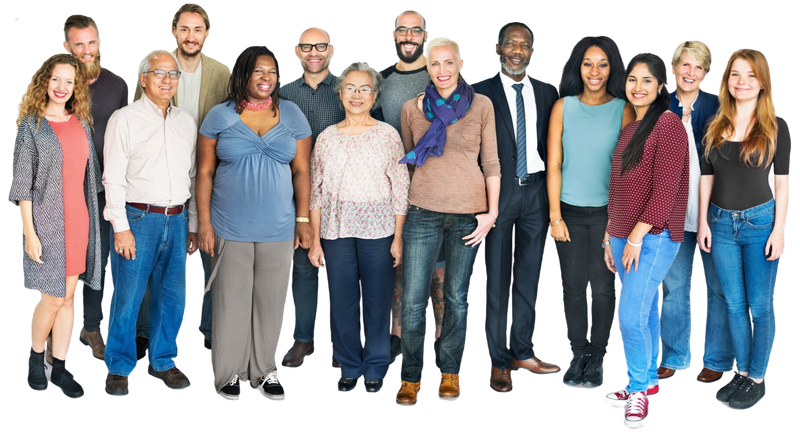
This logo isn't an ad or affiliate link. It's an organization that shares in our mission, and empowered the authors to share their insights in Byte form.
Rumie vets Bytes for compliance with our
Standards.
The organization is responsible for the completeness and reliability of the content.
Learn more
about how Rumie works with partners.
Have you ever made an assumption about someone based on their appearance or background?
The human brain is wired to make quick judgments about people before they even say hello, and it is sometimes based on stereotypes that we aren't even aware of. This is called implicit bias.
Learn practical strategies to recognize and reduce implicit bias, helping you create a fairer and more inclusive workplace. 🙂
Recognize Implicit Bias
Implicit bias refers to the unconscious attitudes or stereotypes that we hold. It can show up in subtle ways, often when we least expect it. Here are some examples:
Favoring the opinions of colleagues who share your background.
Assuming someone's leadership abilities based on their gender.
Believing a person with an accent is less knowledgeable.
Offering opportunities to those who remind you of yourself.
Judging someone's work ethic based on their physical appearance.

Implicit biases often relate to factors like background, gender, level of education, physical appearance, or how they talk.
Now that you can identify implicit bias, let's explore some strategies to challenge these biases and make our workplaces more inclusive.
Did you know?
Everyone has implicit biases, and it doesn't make you a bad person. What's important is becoming aware of them, confronting them, and taking steps to prevent them from influencing your decisions in the workplace.
Challenge Your Assumptions
Picture it: you just got a new colleague who speaks with an accent and wears culturally distinctive clothing. What's your immediate reaction?
Stop and question your "gut feelings." Is your reaction based on facts or stereotypes?
If you notice patterns in how you think about people, ask yourself where you got those ideas.
Reflect on how the media or past experiences might unfairly shape your generalizations.
Through mindful reflection, you can stop implicit bias from affecting your decisions. Over time, you can make this a habit.
Which of these examples reflect implicit bias in the workplace?
A. Only asking for input from colleagues who are of a similar age as yourself.
B. Choosing a team member for a project because they went to a well-known university.
C. Deliberately seeking input from team members with diverse backgrounds and experiences.
D. Preferring to work with people who share your cultural background because it feels more comfortable.
Quiz
Which of these examples reflect implicit bias in the workplace? Select all that apply:
Options A, B, and D reflect implicit bias. They involve assumptions or preferences based on age, educational background, and cultural familiarity, rather than focusing on relevant skills or qualifications. Option C represents an unbiased approach by actively seeking diverse perspectives.
Use Objective Criteria for Decisions
When hiring, focus on skills, experience, and qualifications. 📝
When giving feedback, use measurable performance, not your subjective impressions. 📊
During promotions, evaluate individuals based on their achievements. 🏆
When assigning duties, consider the person's strengths relevant to the task — not your personal connections to them. 🔍
If you organize an after-work event, include everyone on the team! 🎉
Seek Diverse Perspectives
Make it a habit to seek input from people with different backgrounds and viewpoints. 💬
When brainstorming, actively invite diverse voices to share ideas. 🤝
Listen actively, without interrupting or assuming you know the answer. 👂
Rotate team roles to give everyone a chance to contribute in new ways. 🔄
This approach challenges assumptions that might otherwise go unexamined!
Slow Down Your Decision-Making
Slowing down helps you make more thoughtful, unbiased choices. Take a pause before making quick judgments, especially in high-stakes decisions.
Reflect on how your decision might impact others, both short- and long-term.
This small habit allows time to question biases and make fairer, more balanced choices.

Quiz
You've just been asked to put together a team of people to work on a project. What should you consider when choosing teammates?
Choosing team members based on their individual strengths and making an effort to invite diverse perspectives helps reduce bias and leads to better team performance.
Take Action
Here are some concrete next steps to help you actively reduce bias:

This Byte has been authored by
Robert W.
Learning Designer


 Image by katemangostar on Freepik
Image by katemangostar on Freepik Image by rawpixel.com on Freepik
Image by rawpixel.com on Freepik